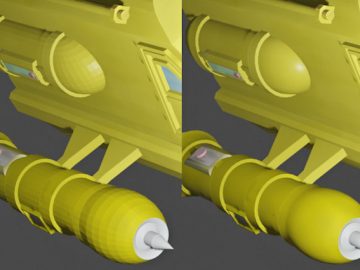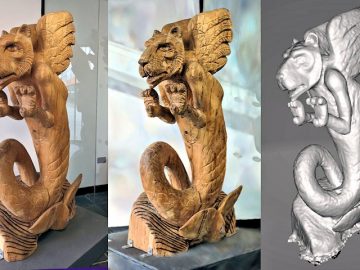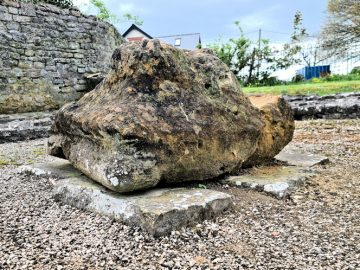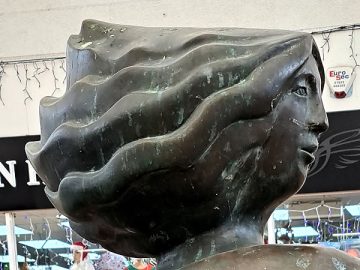Right out in the depths of southwest Wales, not too far from the Fishguard ferry, is perhaps the most magnificent of the Welsh neolithic sites. Known as Pentre Ifan – literally Ifan’s village – it sits on rolling countryside looking out toward Cardigan Bay. As a dolmen it consists of a set of standing stones with a capstone forming a roof over a burial chamber. Here the capstone is around 5m long and stands up to 2.5m above the ground (read more on the Wikipedia page). It must have been awe inspiring for stone-age travellers and, of course, it still inspires awe today, which is why I decided to make a 3D-printable model of it.

Quick summary of this 3D creation
Overview: A 3D scan of a neolithic dolmen.
Location: Nevern, southwest Wales [map].
Date/era: Neolithic.
Software used: LumaLabsAI, Meshmixer, Nomad Sculpt, Blender.
Intended use: 3D printing at 1:76 scale (Hornby OO).
Related pages: Cors y Gedol, Dyffryn Ardudwy, Rhoslen Dolmen.
Download (non-commercial): Thingiverse, MyMiniFactory, Thangs3D.
The 3D scan was made using the LumaLabsAI online system. It’s really made for creating video and render assets rather than for 3D-printable resources, but sometimes produces quite a good mesh. In this case I used some dewarped and reframed video taken from 8K footage, captured with an Insta360 X4 VR camera. Fortunately the video was complete enough to ensure the mesh was a good representation of the dolmen, despite some holes in the ground due to dark shadows, as the screenshot below shows.

I downloaded the mesh and tidied it up in Meshmixer and Blender, as I find that NERF and Gaussian Splat meshes can have some overlapping and internal geometry to remove. Then I transferred the files to my tablet for some sculpting in Nomad Sculpt. I added a cube to fill the holes in the ground, with some sculpting to blend it in, and tidied up defects in the stones. Then I separated the capstone from the base and split it into two, adding some holes for a small box to bridge the gap between them when glueing. You can see how the model looked in Nomad Sculpt below.

After that I did a bit more editing in Blender, mostly just decimating the mesh to a sensible file size, ensuring all the parts were flat on the bottom and at zero height, then scaling to around 1:76 using the 5m capstone size quoted by CADW. I then 3D printed the parts on my Flashforge Adventurer 3C and, after glueing and a few coats of high build primer, painted it with some The Army Painter acrylics. I added some stick on grass, a few people and a wheelie bin to give a sense of real-world scale too. You can see the outcome below.

So there we are, a mini Pentre Ifan that we can use to an approximately true scale on OO-scale model railways and 1:76 dioramas. I hope you enjoy revelling in the miniature cultural heritage it brings to our 3D-printing obsession 🙂




